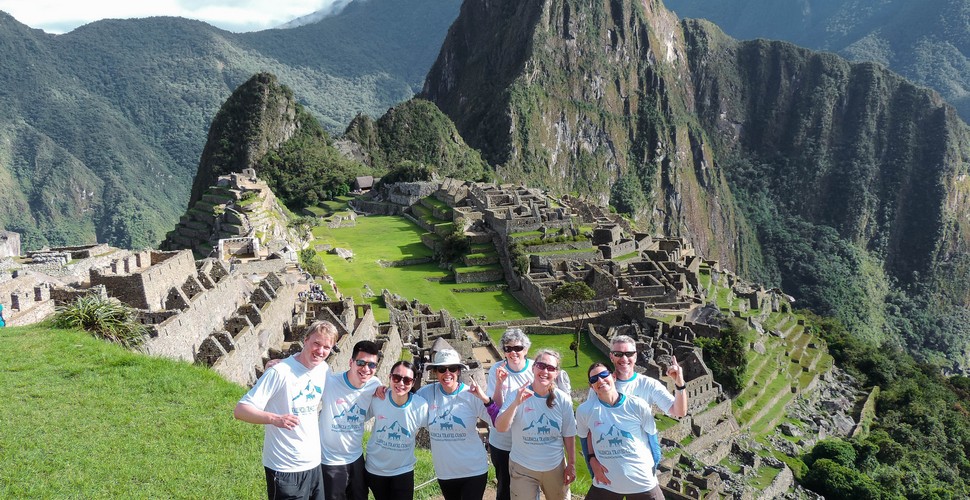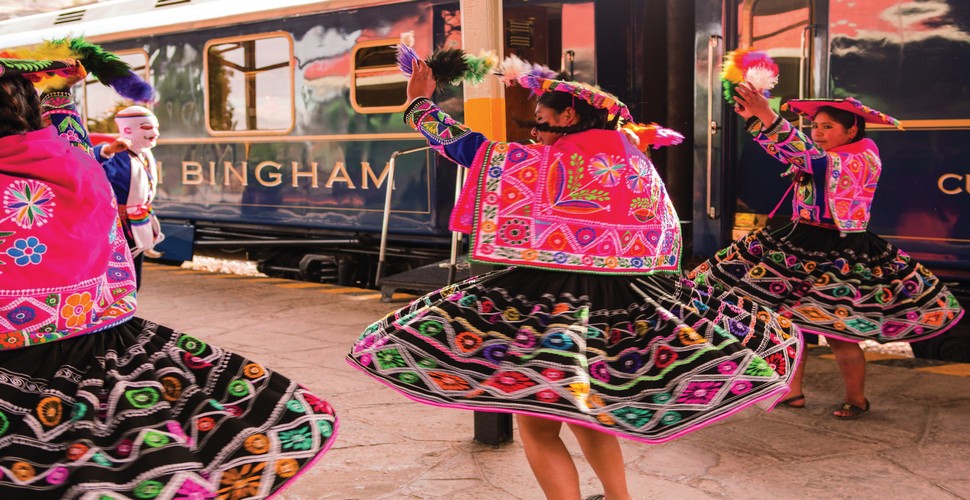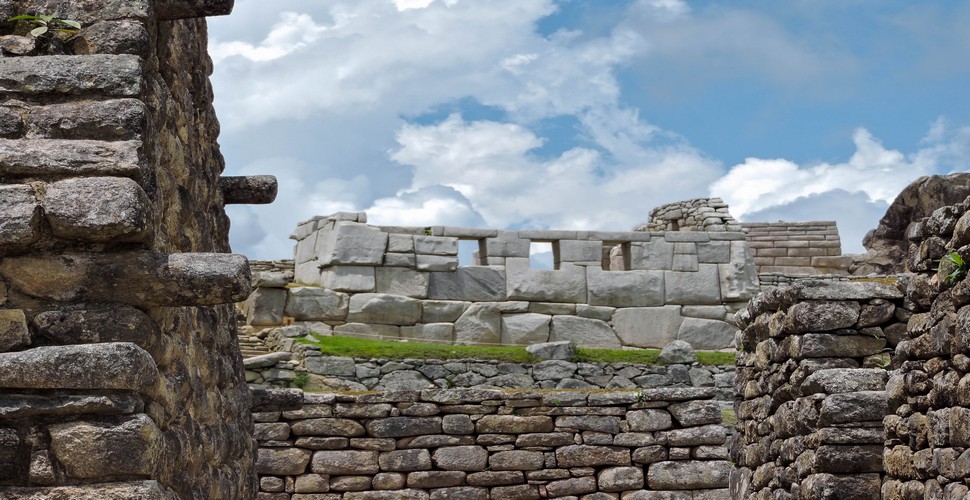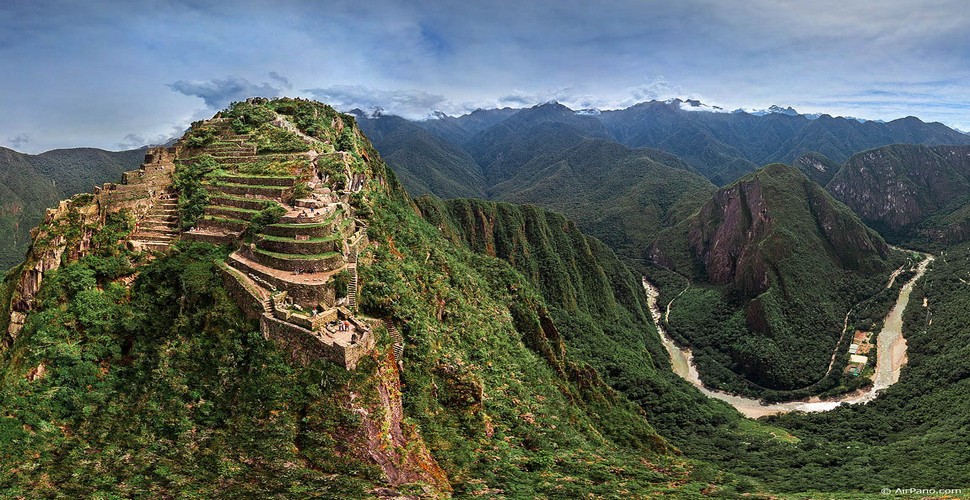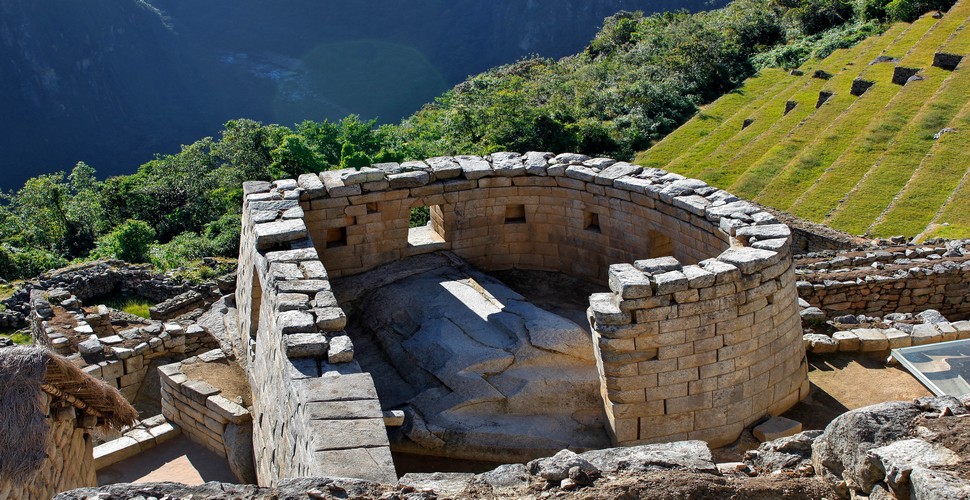
All About Machu Picchu
About Machu Picchu
Machu Picchu, the iconic Peruvian archaeological site is a true wonder of the world and one of the most spectacular places on the planet! Whether you hike to Machu Picchu, or visit Machu Picchu by Train, one thing is for sure...... this iconic site simply has to be visited on a trip to Peru!
All About Machu Picchu
To understand the appeal and magical quality of Machu Picchu, we must first uncover the history, meaning, and the importance of Machu Picchu. This ancient mountain citadel in Peru was once the heart of the Inca Empire which covered The Andean region of Ecuador, Colombia, Peru, Bolivia, Argentina, and Chile. Located at an altitude of nearly 2430 m/8000 ft in a region of Peru where the Andes meet the Amazon Rainforest, Machu Picchu is now one of the most visited archaeological sites in all of South America. Inside the Machu Picchu Citadel there are some important temples and landmarks, here are the main sections of Machu Picchu.
The Majestic Machu Picchu
The Different Ways to Get to Machu Picchu
The most famous attraction in Peru, by far is Machu Picchu, which attracts visitors from all over the planet. This magnificent archaeological site sits on an isolated mountain ridge where the Andes Mountains meet the Amazon Rainforest. For your Peru Machu Picchu trip, one of the most iconic archaeological sites in the world, and for any Machu Pichu vacation package, you will need to plan ahead, as it is located in a remote area of Peru. Here are the best ways to get to Machu Picchu.
Getting to Machu Picchu By Train from Cusco
Cusco to Aguas Calientes: Start your Peru Machu Picchu trip by flying into Cusco, the nearest major city to Machu Picchu. From Cusco, take a train to Aguas Calientes (also known as Machu Picchu Pueblo). Several train companies, such as Peru Rail and Inca Rail, offer daily services. The train ride to Machu Picchu through the sacred Valley is a scenic experience in itself.
For travelers who are short on time and otherwise not able or willing to trek to Machu Picchu, most travelers on their Machu Picchu Tours will arrive in Aguas Calientes by train, which is the ideal solution. It is also the only option for travelers to avoid an overnight stay in Aguas Calientes altogether and instead arrive in the morning from either Ollantaytambo or Poroy (Cusco).
The prices for train tickets to Machu Picchu differ depending on the advanced time of booking, the time slot chosen for the day of travel, and the type of train you prefer.
Train to Machu Picchu
Types of Train to Machu Picchu:
The Expedition Train
The expedition train is the tourist class of train to Machu Picchu. The train is all seated and departs from Ollantaytambo or Poroy. The Expedition Train is the most economical option for tourists heading to Machu Picchu. Service is simple, and light snacks and drinks are available for purchase. Air conditioning and heating ensure a reasonable temperature, and luggage is stored securely in the racks placed above the seats.
The Vistadome Train
The Vistadome train comes with large panoramic windows and skylights through which passengers can enjoy the stunning views of the Sacred Valley. Trains depart for the three-hour train journey from Poroy, a small village outside Cusco, or the 1:30-minute ride from Ollantaytambo several times a day.
The Belmond Hiram Bingham
The Belmond Hiram Bingham offers a luxury level of service with the inclusion of gourmet food, drinks, and on-board entertainment. Running only between Poroy and Machu Picchu, the service offered during the three-hour train is reminiscent of luxury exclusive train travel on the Orient Express, with all the creature comforts thrown in.
Luxury Train to Machu Picchu
Main Landmarks and Things to Do in Machu Picchu
Temple of the Sun
The rounded wall of the tower of The Temple of The Sun was built on a large ceremonial stone that forms the base. This temple was used to honor Inti, the Sun God who was worshipped by The Incas. Sunlight pours in through the eastern-facing windows during both winter and summer solstice. The Temple of The Sun at Machu Picchu is an excellent example of the Inca´s advanced knowledge of astrology, astronomy, religion, and architecture!
The Intihuatana
"Intihuatana", is the Quechua name of this stone in Machu Picchu and means “hitching post of the sun”. It is found in the "Urban Sector" of the Machu Picchu citadel. It is thought to have been used as a sundial or astronomic calendar. The 2-meter-high slab of stone is marked by a protruding tab that points to the magnetic north. The Incas would have been able to track the movement of the sun and the seasons by using this remarkable stone. The longest shadow appears during the winter solstice on the 21st of June in the southern hemisphere, allowing them to determine their agricultural calendar and ritualistic activities.
The Temple of the Three Windows
Among the many places to see in Machu Picchu, one of the most important is the temple of the Three Windows, near the Machu Picchu main square. The temple of the three windows has always been a source of discussion amongst archaeologists as to its purpose. This Machu Picchu temple has three windows that are perfectly embedded into the stone, they are also perfectly symmetrical. Some Machu Picchu researchers believe there were at one time, 5 windows but the structure for the other 2 probably collapsed over time. This entire temple also had a roof over it when it was originally built, which probably collapsed also.
Temple of The Three Windows
The Temple of The Condor
The Temple of the Condor in Machu Picchu is another excellent example of Inca stonemasonry. This million-year-old natural rock formation began to take shape and the Inca skillfully shaped the rocks into the outspread wings of a condor in flight. On the floor of this Machu Picchu temple, is a rock carved in the shape of the condor's head and neck, completing the figure of this three-dimensional Andean Condor, one of The Inca deities. Archaeologists at Machu Picchu believe that the head of the condor was used as a sacrificial altar by the Incas
Huayna Picchu
Huayna Picchu, which means young mountain, inside Machu Picchu is the conical mountain in most Machu Picchu photos. It is one of the 2 mountains you can scale inside Machu Picchu, the other being Machu Picchu Mountain (See below). Though a steeper and hair-raising hike, the physically fit should definitely take the opportunity to trek it to witness a spectacular view of Machu Picchu from a completely different angle. Vertigo sufferers may want to consider The Machu Picchu Mountain if they want to hike as Huayna Picchu has a narrow trail with sheer drops and even ladders at a certain section. The views of the surrounding valley however are absolutely mind-blowing!
Huayna Picchu Mountain
Machu Picchu Mountain
Unlike Huayna Picchu, which is a very popular climb, fewer visitors take on the challenge of climbing Old Mountain - Machu Picchu Mountain in Quechua. This means that you will usually have this incredible mountain to yourself. The view of Machu Picchu from the Machu Picchu Mountain is unparalleled. Huayna Picchu is reduced to a mere bump from this height. The view from Machu Picchu Mountain also offers you the opportunity to put into perspective the amazing location of the Inca citadel of Machu Picchu. The winding Urubamba River crashes at the foot of the mountain and passes through the middle of the peaks, allowing for otherworldly vistas.
The Inca Bridge In Machu Picchu
The Inca Bridge in Machu Picchu is a Man-Made bridge made of two tree trunks that cross a 5-meter gap on a narrow path along a cliff face. The stone wall was constructed by the Incas to support the Inca Trail, with the valley floor situated approximately 580 meters below. On both sides of the bridge, stone steps jut out from the wall so that the handmade bridge can be rebuilt. The Inca bridge served as a protective measure for an alternative entrance route to Machu Picchu, via the western side of Machu Picchu Mountain. In contrast, the commonly used entrance through the Sun Gate for those hiking The Inca Trail navigates around the eastern side of the mountain. If any intruders attempted to enter via this alternative trail, the Inca guards could easily remove the log bridge, making the trail impassable. Additionally, the bridge could function as a hidden entry point for the Inca army into Machu Picchu.
The Main Sites Inside Machu Picchu
What Was Machu Picchu?
Machu Picchu means "Ancient Mountain" in Quechua, one of Peru’s indigenous languages, especially in The Andes. Machu Picchu evolved from a mountain summit to a sacred site during the rule of the Inca Empire in the middle of the 15th century. Found just 75km / 45 miles from Cusco City, the Inca Trail to Machu Picchu today, is a magnet for adventurous travelers, though it was once a remote site that allowed the Incas to hide from any possible invaders. Many stone steps some of which were cut into over 100 impressive terraces, lead up to an expansive stone citadel, within it were plazas, sacrificial areas, and an elaborate irrigation system. There was also a living sector for Inca royalty and guardsmen, servants, and an entourage of many more. While it hasn’t been established if Machu Picchu served as a seasonal retreat or long-term residency for the Incas, the site did feature the ancient culture’s core elements of agriculture, spirituality, astronomy, and a generally harmonic city.
One of the most impressive features of Machu Picchu is that after centuries of heavy rains and frequent earthquakes, Machu Picchu remains in an excellent state of preservation. Inca engineers and architects insisted on building a sturdy foundation and tiered farmlands to prevent landslides. The Inca stonemasons carved enormous granite stone in such a precise way that they could be pieced together like a jigsaw, without mortar or any sort of fixing agent. This is why the Inca civilization continues to be a topic of wonder for modern archaeologists and history buffs, to try and uncover the facts of this incredibly advanced society.
Temple of The Sun in Machu Picchu
The History of Machu Picchu
Machu Picchu in its prime was truly fit for an Emperor! It is believed the citadel was built for the Inca Pachacutec who ruled from 1438 to the early 1470s. The ninth Inca ruler, Pachacutec would begin an era of conquest that marked the advance of the Inca Empire called Tawantinsuyu, the largest empire in all of The Americas at the time.
Archaeologists estimate that the construction of Machu Picchu began around 1450 and took decades to complete. Just a century later, however, The Spanish Invaders began to gain ground in what is today is called the Cusco region. Remote and way off map, Machu Picchu was perfectly hidden from the Spanish invaders, however, Machu Picchu was still abandoned by its people who sought safety. In 1911, American explorer Hiram Bingham arrived in the Sacred Valley and followed the Urubamba River all the way to Machu Picchu. He actually thought it was the mysterious “Lost City of Gold” called Vilcabamba. Though overgrown with dense cloud forest, Machu Picchu was not a secret to locals who continued to grow their crops there. During the past 50 years, Machu Picchu has been given the title of Peruvian Historical Sanctuary (1981), A UNESCO World Heritage Site (1983), and one of the New Seven Wonders of the World (2007).


